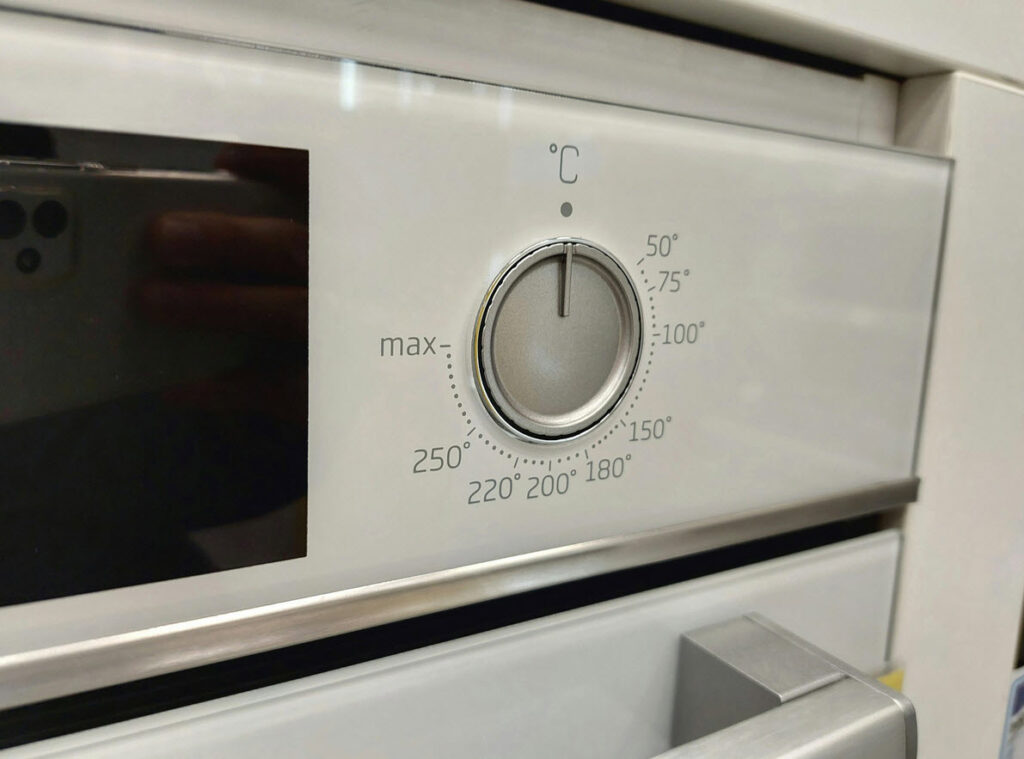
Ever pulled a tray out of your home appliance only to find half your cookies are golden brown and the other half look like they’ve been sunbathing too long? We’ve all been there.
Uneven cooking can take the joy out of baking or roasting, but the good news is that it’s usually fixable.
Whether it’s a wonky rack position, poor airflow, or your oven playing temperature tricks, there are simple ways to get more reliable results. In this guide, we’ll walk you through easy tips and smart tweaks to help your oven cook like a pro (so you don’t have to).
Check the Oven Rack Position
You’d be surprised how much of a difference a small rack adjustment can make. If your meals come out with crispy edges but soggy centres—or vice versa—your rack placement could be the culprit.
Consistent cooking really depends on how you position those racks. When they’re placed poorly, heat can’t flow the way it’s supposed to. That means uneven results: some parts overcooked, others still clinging to raw. Not ideal.
If your racks are too close together, they block airflow and make it harder for heat to circulate around your food. And without that steady movement of hot air, you’re left with unpredictable results. Not to mention, a lot of unnecessary hovering by the oven door.
While different dishes may call for specific placements, the middle of the oven is usually your best bet. It’s the zone where heat spreads out more evenly, making it a safe go-to for most recipes.
The beauty of this fix? It’s completely free, takes seconds, and doesn’t require any fancy tools.
Just a quick shift in rack position can make a noticeable difference in how your dishes turn out. It also saves you from the constant peek-and-pray game, letting you cook with more confidence and fewer surprises.
So, before you blame the recipe or your skills, do this quick adjustment, and who knows—it might just be the easiest win in your kitchen.
Calibrate the Oven Temperature
If your perfectly timed roast is coming out dry or your cookies are baking way too fast, your oven might be fibbing about its temperature. A lot of older ovens (and even some newer ones) run hotter or cooler than the number you set. A quick calibration is the answer.
Start by grabbing an oven thermometer, an inexpensive tool that can save you a ton of frustration. Pop it in the centre of your oven and preheat to your usual go-to temp. If the numbers don’t match, it’s time for a tweak.
Most modern ovens make calibration quite easy, but every model’s a little different. Simply check your manual for the right steps to adjust the thermostat.
Dialling in the correct temp helps your food cook the way it’s meant to—better texture, better flavour, and fewer surprises. Plus, it saves you from wasted ingredients and constant second-guessing. A little calibration goes a long way towards making your oven more reliable.
Inspect the Oven Door Seal
The door seal is another important part of your oven worth inspecting when your oven feels like it’s working overtime, but your food still isn’t cooking right. That rubber gasket lining the oven door? It plays a big role in keeping heat where it belongs.
To check it, just open the oven door and take a good look around the edges. If you spot cracks, rips, or areas that look worn out, it’s probably time for a replacement.
A damaged seal lets heat escape, which not only messes with your cooking results but also makes your oven use more energy than it needs to. Luckily, new seals are affordable and easy to find.
Swapping in a fresh one helps your oven hold a steady temperature, cook more efficiently, and even lower your energy bill.
Clean the Oven Regularly
A smoky oven that makes your kitchen smell like last week’s dinner every time you cook is a clear sign it’s time for a good old clean.
A dirty oven doesn’t just look bad. It actually messes with heat flow, throws off cooking times, and can even alter the flavour of your food.
In addition, grease and food buildup block proper heat circulation, which means some parts of your meal might end up overcooked while others are barely warm. Plus, who wants their apple pie tasting like burnt cheese from yesterday’s pizza?
To avoid this, incorporate as few easy habits into your kitchen routine. Clean up spills as they happen, and give your oven a deeper clean every so often.
Your best bet is a simple baking soda and vinegar combo. Sprinkle the multi-tasking white powder over greasy spots, spray with vinegar, let it bubble, and then wipe it all away. No harsh chemicals needed.
Use Baking Stones or Sheets
Baking stones and insulated sheets are handy tools that can make a noticeable difference in how evenly your food cooks.
They work by absorbing and distributing heat more consistently than standard oven racks alone, which helps eliminate hot spots that can lead to burnt edges or underdone centres.
They are especially useful for dishes that rely on a crispy or well-cooked base—think pizzas, pastries, or artisan bread. Preheating them before baking allows the surface to hold and transfer heat efficiently, giving your dough that ideal golden finish without drying it out.
Another bonus? They reduce the need to rotate trays or babysit your food while it’s cooking. With more consistent heat from the bottom up, your meals cook more evenly with less effort on your part.
Rotate Dishes Midway
Ever noticed how one side of your tray cooks like it’s in the Sahara, while the other side’s still chilling in the Arctic? That’s your oven’s hot spots doing their thing. Your solution is just giving your dish a little spin halfway through.
Rotating trays or pans during cooking helps everything bake or roast more evenly—no special tools, no extra fuss. Whether you’re working on gooey cookies, roasted veggies, or a hearty lasagna, a simple turn can be the difference between “meh” and “nailed it.”
This trick takes seconds, but it saves you from dealing with burnt edges or undercooked centres. It also means fewer recipe tweaks, less guesswork, and more consistent results across the board.
It’s a small move that brings a big payoff, and once you get in the habit, you’ll wonder how you ever cooked without it.
When To Use Professional Oven Cleaning Services
Sometimes, no matter how many baking soda scrubs you do, your oven just needs a deep, expert-level clean. That’s where stove cleaning services come in.
These pros have the tools (and patience) to tackle the baked-on messes most of us would rather pretend don’t exist. From grimy corners to stubborn grease buildup, they’ll get your oven back in top shape—without you lifting a finger.
A lot of households bring in a cleaning service once or twice a year to keep things running smoothly. It’s a smart move if your oven’s been through a lot, or if you just want to hit the reset button and start fresh.
Beyond the sparkle, a professionally cleaned oven heats more evenly, smells better, and performs like it’s brand new. It’s a worthwhile investment that saves you time, hassle, and maybe even a few ruined dinners.
Conclusion
An unpredictable oven doesn’t have to ruin the fun of cooking. With a little attention and care, even the quirkiest setup can turn out consistently great meals for your family.
Sometimes, the difference between frustration and confidence in the kitchen comes down to a few clever tweaks—and once they click, cooking feels a whole lot easier.








